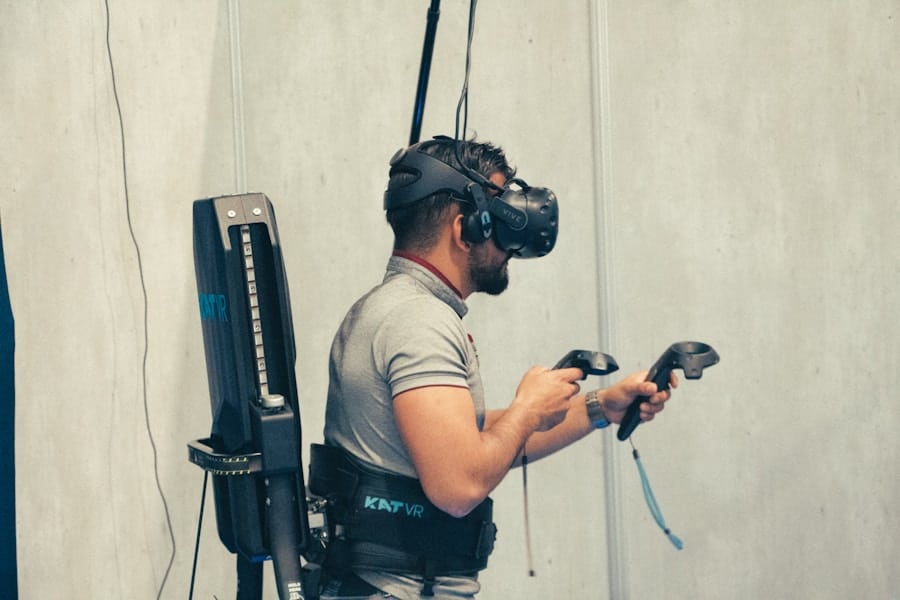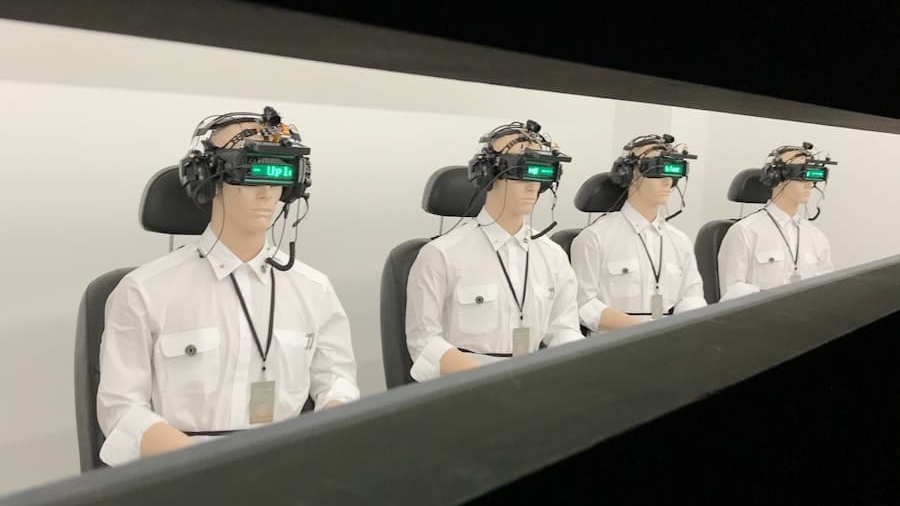The advent of 5G technology marks a significant leap in telecommunications, promising faster data transfer rates, lower latency, and enhanced connectivity. This new generation of mobile networks is not merely an incremental upgrade; it fundamentally transforms how devices communicate and interact with one another. In the context of industrial training, 5G’s capabilities can be harnessed to create immersive experiences that were previously unattainable.
Augmented Reality (AR), which overlays digital information onto the real world, stands to benefit immensely from the high-speed, low-latency characteristics of 5G. Together, these technologies can revolutionize the way industries train their workforce, providing real-time, interactive learning experiences that enhance understanding and retention. As industries increasingly adopt digital transformation strategies, the integration of 5G and AR into training programs becomes a focal point for enhancing operational efficiency and workforce competency.
Traditional training methods often rely on static materials or instructor-led sessions that may not fully engage learners or provide the hands-on experience necessary for skill acquisition. By leveraging 5G-enabled AR applications, organizations can create dynamic training environments that simulate real-world scenarios, allowing employees to practice skills in a safe and controlled setting. This synergy between 5G and AR not only enhances the learning experience but also prepares workers for the complexities of modern industrial tasks.
Key Takeaways
- 5G and augmented reality are revolutionizing industrial training by providing immersive and interactive learning experiences.
- The advantages of 5G in augmented reality for industrial training include high-speed connectivity, low latency, and the ability to support multiple users and devices.
- Challenges and limitations of implementing 5G in augmented reality for industrial training include infrastructure costs, security concerns, and the need for specialized skills and knowledge.
- Potential applications of 5G in augmented reality for industrial training range from equipment maintenance and repair to safety training and simulations.
- The impact of 5G on the future of industrial training is expected to be significant, with increased efficiency, cost savings, and improved learning outcomes.
Advantages of 5G in Augmented Reality for Industrial Training
One of the most significant advantages of 5G technology in the realm of augmented reality for industrial training is its ability to support high-definition content streaming with minimal lag. In traditional training environments, delays in content delivery can hinder the learning process, leading to frustration and disengagement. With 5G’s ultra-reliable low-latency communication (URLLC), trainees can access real-time data and visualizations without interruption.
This immediacy allows for a more fluid interaction with AR applications, enabling learners to receive instant feedback on their actions and decisions. Moreover, 5G’s enhanced bandwidth capabilities facilitate the integration of complex simulations and multi-user environments. In an industrial setting, this means that multiple trainees can engage with the same AR application simultaneously, collaborating on tasks or troubleshooting problems together, regardless of their physical location.
For instance, a team of engineers could work on a virtual assembly line, each contributing to the process while receiving real-time guidance from an AR overlay. This collaborative aspect not only fosters teamwork but also mirrors the interconnected nature of modern industrial operations.
Challenges and Limitations of Implementing 5G in Augmented Reality for Industrial Training

Despite its numerous advantages, the implementation of 5G in augmented reality for industrial training is not without challenges. One primary concern is the infrastructure required to support 5G networks. While urban areas may have relatively robust 5G coverage, rural or remote locations often lag behind, creating disparities in access to advanced training technologies.
Industries operating in less connected regions may find it difficult to fully leverage the benefits of 5G-enabled AR applications, potentially widening the skills gap among workers.
Upgrading existing systems to accommodate 5G technology involves significant investment in hardware and software, as well as ongoing maintenance costs.
Smaller companies or those with limited budgets may struggle to justify these expenses, particularly when traditional training methods have been effective in the past. Furthermore, there is a need for skilled personnel who can develop and maintain AR applications tailored to specific industrial needs, adding another layer of complexity to implementation.
Potential Applications of 5G in Augmented Reality for Industrial Training
The potential applications of 5G in augmented reality for industrial training are vast and varied, spanning multiple sectors such as manufacturing, healthcare, logistics, and construction. In manufacturing, for example, AR can be used to guide workers through complex assembly processes by overlaying step-by-step instructions directly onto the equipment they are working on. With 5G’s high-speed connectivity, these instructions can be updated in real-time based on changes in production schedules or equipment configurations, ensuring that workers always have access to the most current information.
In healthcare, augmented reality can enhance medical training by providing students with interactive simulations of surgical procedures or patient care scenarios. With 5G technology, these simulations can incorporate real-time data from medical devices or patient monitors, allowing trainees to practice decision-making in high-pressure situations.
This not only speeds up training but also improves operational efficiency by reducing errors and increasing productivity.
Impact of 5G on the Future of Industrial Training
The impact of 5G on the future of industrial training is poised to be transformative. As organizations increasingly recognize the value of immersive learning experiences, the demand for advanced training solutions will likely grow. The ability to deliver high-quality AR content seamlessly will enable companies to create more engaging and effective training programs that cater to diverse learning styles.
This shift towards experiential learning is expected to lead to higher retention rates and improved job performance among employees. Furthermore, as industries continue to evolve with technological advancements such as automation and artificial intelligence, the need for continuous upskilling will become paramount. 5G-enabled AR training solutions can facilitate this ongoing education by providing workers with access to real-time information and resources as they navigate new tools and processes.
This adaptability will not only enhance individual career trajectories but also contribute to overall organizational resilience in an increasingly competitive landscape.
Integration of 5G and Augmented Reality in Industrial Training

Collaboration with Technology Providers
This may involve collaborating with technology providers to develop customized AR applications that align with specific operational needs.
User Experience Design
Moreover, successful integration necessitates a focus on user experience design. Trainees must find AR applications intuitive and engaging; otherwise, they may resist adopting new technologies. This involves conducting user testing and gathering feedback during the development process to ensure that the final product meets learners’ needs effectively.
Training Facilitators
Additionally, organizations should invest in training facilitators who are proficient in both AR technology and instructional design principles to maximize the impact of these innovative training solutions.
Considerations for Implementing 5G in Augmented Reality for Industrial Training
When considering the implementation of 5G in augmented reality for industrial training, several factors must be taken into account to ensure success. First and foremost is the need for a robust network infrastructure capable of supporting high-speed data transfer and low latency across all operational areas. Organizations should conduct thorough assessments of their current network capabilities and work closely with telecommunications providers to address any gaps.
Another critical consideration is data security and privacy. As AR applications often require access to sensitive information or proprietary processes, organizations must implement stringent security measures to protect against potential breaches. This includes ensuring compliance with relevant regulations and standards while also educating employees about best practices for data handling within AR environments.
The Future of 5G in Augmented Reality for Industrial Training
The future of industrial training is undeniably intertwined with advancements in technology such as 5G and augmented reality. As these innovations continue to evolve, they will reshape how organizations approach workforce development and skill acquisition. The potential for immersive learning experiences powered by real-time data will not only enhance employee engagement but also drive operational efficiency across various sectors.
As industries navigate this transformative landscape, it is essential for organizations to remain proactive in adopting new technologies while addressing challenges related to infrastructure, cost, and security. By embracing the possibilities offered by 5G-enabled AR applications, companies can position themselves at the forefront of industrial training innovation, ultimately fostering a more skilled and adaptable workforce ready to meet the demands of an ever-changing market environment.
In a recent article discussing the future of 5G in augmented reality for industrial training, experts highlighted the importance of having powerful devices to support these advanced technologies. For those looking for the best laptops to handle demanding tasks like SolidWorks, the Top 10 Best Laptops for SolidWorks in 2023 guide provides valuable insights on top-performing models from Lenovo and Dell. Having the right hardware is crucial for maximizing the potential of AR applications in training scenarios.
FAQs
What is 5G?
5G is the fifth generation of wireless technology, designed to increase the speed and responsiveness of wireless networks. It promises to deliver faster download and upload speeds, more stable connections, and lower latency.
What is Augmented Reality (AR)?
Augmented Reality is a technology that superimposes computer-generated images, information, and sensory enhancements onto the real world, providing an enhanced experience.
How does 5G impact Augmented Reality for Industrial Training?
5G’s faster speeds and lower latency make it ideal for delivering high-quality AR experiences in real time. This is particularly beneficial for industrial training, as it allows for more immersive and interactive training scenarios.
What are the benefits of using 5G in AR for Industrial Training?
Some benefits of using 5G in AR for industrial training include improved training simulations, real-time feedback, remote collaboration, and the ability to access large amounts of data quickly.
What are some potential applications of 5G and AR in Industrial Training?
Potential applications include equipment maintenance and repair simulations, safety training scenarios, remote expert assistance, and interactive on-the-job training experiences.
What are the challenges of implementing 5G and AR in Industrial Training?
Challenges include the cost of implementing 5G infrastructure, ensuring network security, and developing AR content that effectively enhances industrial training experiences.

